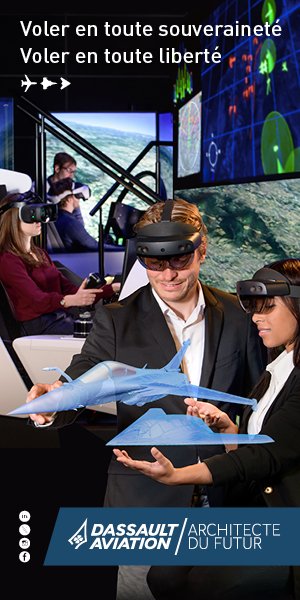
Politique Internationale — Innovation is now at the heart of organizational strategy, especially in industry. How is management adapting to this situation? Is this field also under pressure to evolve at speed? Or do we remain focused on major intangible principles in terms of leadership?
Linda Hill — Whole industries are undergoing transformation in response to evolving stakeholder expectations and emerging technologies. Take the automotive industry, for example, with the development of electric vehicles and software defined vehicles. Yes, economies of scale can still provide competitive advantage, but if leaders don’t figure out how to build agile organizations able to innovate, their organizations will not survive, nonetheless, thrive. My first book on leadership and innovation, Collective Genius, looked at how leaders build teams and organizations that can innovate, time and again. Although there had been a great deal of research on leadership and on innovation, there had been very little that looked at the connection between the two. What we learned surprised us: leading innovation requires a different mindset and behaviors from leading change. From decades of research we have known that innovation is not about an individual genius having an “aha” moment – rather it is about unleashing and harnessing what we refer to as the diverse slices of genius (people’s talents and passions) to co-create the future. So leading change is about setting a vision, communicating that vision, and inspiring others to follow you to the future. But leading innovation is about creating an environment in which others are willing and able to co-create the future with you. Formal authority is a rather limited source of power when it comes to innovation; you cannot force people to innovate, you can only invite them to by creating the right culture and capabilities. Although the more successful transformations are instigated or designed by top management, their implementation tends to be more “organic” or bottom-up.
In the new book we’re working on, Genius at Scale, my co-authors and I are studying what we call the ABCs of leading innovation at scale. The challenge of innovating is not only generating new ideas that will address customer pain points or create new possibilities for them, rather it is also about launching and scaling those ideas. To scale innovation requires that leaders architect the culture and capabilities required for co-creation; build bridges or partnerships at the boundary of their organizations to get access to critical talents and capabilities (often technology) for innovation; catalyze movements of key stakeholders to drive co- creation across ecosystems.
To innovate at scale and with speed will require most to partner with other organizations – both private and public. Take for instance, Microsoft’s partnership with ChatGPT; if this partnership is to pay off, both organizations will need leadership able to build the social connections required to support doing the tough work of collaborating, experimenting, and learning across organizational boundaries (it is hard enough to innovate in one organization, nonetheless across difference). Or if electric vehicles are to ever to take off, think about the leadership required in our private and public organizations to build out the infrastructure needed to support the operation of electric vehicles, or to figure out how to reskill the workforce displaced by the seismic shifts in the industry as we adopt emerging technologies like agentic AI.
P. I. — This redefinition of roles within the company can’t be easy to integrate
L. H. — We are all too familiar with the barriers that exist in our organizations, especially legacy organizations, to transform and innovate. The pressure to deliver short-term results in a very unforgiving global economy too often drives out investments in breakthrough innovations that will only pay off in the longer- term (compare that time frame to the average tenure of CEOs these days). I co-authored an article on boards and innovation in which we found that senior management perceived their boards as “unfriendly” to innovation, despite their rhetoric. They complained board members varied considerably in their risk appetite but were conflict avoiders and rarely had open discussions about how these differences were playing out when making innovation decisions. I meet high-potentials in many incumbents who are reluctant to take positions that will require innovation – like heading an innovation labor or corporate accelerators. They see these assignments as career derailers, because they know that missteps, dead ends, and failures are inherent to innovation – which is always more a process of acting your way to a solution through experimentation and iteration, than planning your way to one.
P. I. — Create an environment in which the various players within the company can co-create in order to innovate: does this type of leadership require specific tools? What techniques need to be mastered?
L. H. — For almost twenty-five years, I have spent thousands of hours researching and consulting with leaders across the world on how to lead innovation. I’ve found that the best leaders of innovation do not divide their companies into two groups: those who get to innovate (maybe the scientists or technologists in your organization) and those to get to “execute” (everybody else). They adopt a more democratic definition of innovation. Although they recognize the difference between incremental and breakthrough innovation, they define innovation as anything that is “new and useful” to the organization (a product, a service, a business model, a way of streamlining a process, or figuring out how to cut costs). They want everybody to be both value creators and game changers; consequently, in their companies innovate ideas are more likely to be implemented or commercialized.
P. I. — Does innovation leadership modify the company’s relations with its immediate environment?
L. H. — Leaders need to be systemic thinkers and have the emotional intelligence to build partnerships with organizations beyond their boundary. Of course, they have to set up the right governance structures and negotiate issues like IP protections, but they also have to build robust social connections of mutual trust and mutual influence if they are going to co-create across organizational differences. Leaders must also know how to catalyze movements of collective action across key stakeholders, accelerating multiparty collaborations, well beyond organizational boundaries to pursue shared goals.
P. I. — That means the possibility of opening up new markets...
L. H. — An example that springs to mind is the ecosystem that Akira Fukabori and Kevin Kajitani, two engineers who worked for ANA, the Japanese airline, are building. These two individual contributors convinced ANA’s management to invest $22 million to fund their ANA AVATAR XPRIZE idea for an “avatar service platform”, a new growth platform to serve the 90+ percent of people who never fly. Even though teleportation may sound like “the stuff of science- fiction” Akira and Kevin saw ANA as being in the mobility business, not the airline business.
As they say, the rest is history. They are building a new type of global infrastructure consisting of general-purpose robots (avatars) that facilitate the two-way transfer of sight, sound, touch, taste and smell over the internet. Using a shared economy model like Uber’s, their dream is to make it possible for people anywhere in the world to rent and remotely embody these robots for a wide range of tasks. With ANA’s support, Akira and Kevin were able to build out a global ecosystem of technologists, start-ups, corporations, non-profits, and government stakeholders, to turn their idea into reality. Their ecosystem has continued to grow, and they have now spun out into a start-up called “Avatarin.” Already their avatars are being deployed to offer customer service in airports, provide gainful employment for the disabled. and conduct experiments on the International Space Station.
P. I. — When it comes to energy, where is innovation concentrated?
L. H. — To answer, I have another example in mind. This story dates back over ten years, but I vividly remember Luca de Meo’s (now CEO of Renault Group - editor’s note) visit to the Harvard Business School. At the time, he was the Chief Marketing Officer of Volkswagen. Luca has always been a visionary; even then he talked about “connected vehicles”, what we now refer to as software defined vehicles and described all the innovation underway to develop affordable high performing electric vehicles. He literally blew the audience away when he said the following: “If you want to change the world, then go and work in the car industry rather than in a Silicon Valley start-up.” Luca explained: everyone owns a car nowadays, so if you want to use your energy wisely and drive your impact, go work in an industry that touches billions of lives and impacts the economic prospects of millions of individuals. You could feel the energy in the room as he challenged the students to think hard about where to invest their talents and passions if they really wanted to innovate at scale and shape the future.
P. I. — To what extent are innovation and vision linked?
L. H. — As I said, leading innovation is different from leading change. But we do find that exceptional leaders of innovation are visionaries and perhaps equally important, they are excellent story- tellers who know how to inspire others with their hopeful narratives for our future. But they are also humble; they know what they don’t know. A leader who had a reputation for being one of the finest in Silicon Valley explained to me that by definition, if you are trying to do something breakthrough, you don’t have a vision – you don’t have an answer or might not even know how to find one yet. But he went on to say you do have a purpose. While vision is about where you want to go, purpose is about why you want to go there. Take for instance, Luca de Meo’s Letter to Europe (in March 2024, before the European elections - editor’s note) to key policymakers and stakeholders across Europe. He does not claim to have the answers rather he calls for key stakeholders within the European mobility industry ecosystem, to come together and co-create the answers for how to make the industry more competitive, sustainable, and inclusive.
P. I. — There was a time when the younger generation seemed particularly attuned to corporate leaders. This seems to be less true today...
L. H. — My collaborators and I have been interested in this question. We have conducted a series of executive roundtables and surveyed thousands of executives from around the world to understand what it takes to lead a multi-generational workforce. We are finding that those companies who figure out how to leverage their digital natives are making more progress with digital transformation. However, these executives tell us they do not find it easy to work with digital natives. As one Asian executive put it, a lot seems to get lost in translation when working with them. For digital natives to do their best work and innovate on behalf of the organization, for sure companies need to take the time to help them understand the business and communicate clear guardrails to guide their behavior – don’t just share what company practices and policies are, especially what they might perceive as bureaucratic constraints, take the time to explain why they are needed. The digital natives have shared their frustrations with us as well. They hate it when their companies don’t use the latest digital tools (lots of frustrations about generative AI these days). And if you want to retain them, they have to feel valued and valuable. They want to have impact and work in companies whose purpose resonates with them because it goes beyond growing a profitable business. They want to work for companies that strive to do well and do good.
P. I. — It’s easy to see all the new demands you’re referring to. Is the pressure they generate really sustainable for a company director?
L. H. — More now than ever, directors and senior executives dare not go it alone. A leader described his senior team meetings as a “sacred space”, where even he seeks feedback from a “sparring partner”, another c-suite executive, on how his team is experiencing him. Is he creating an environment where members feel psychologically safe to speak up, even when they are the minority voice? Leaders are discovering that only through robust debate and discourse are they able to navigate the complex and dynamic global economy and make though judgment calls about how to address the challenges of today, while making prudent, yet big bet, investments in the future. Consequently, I am not surprised by the number of articles and books on the topics of organizational purpose, collaboration, decision-making and innovation.



















